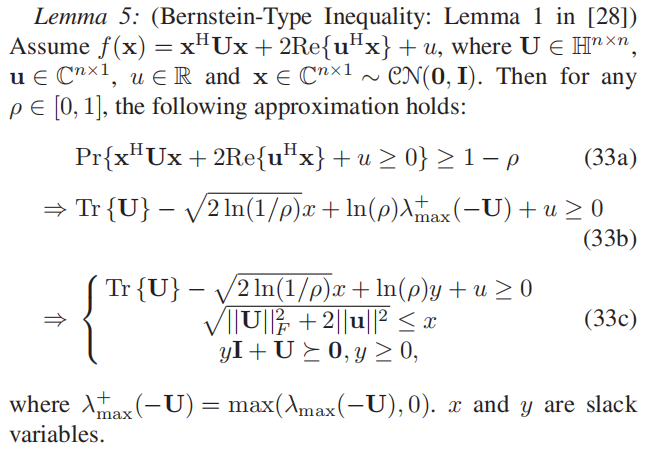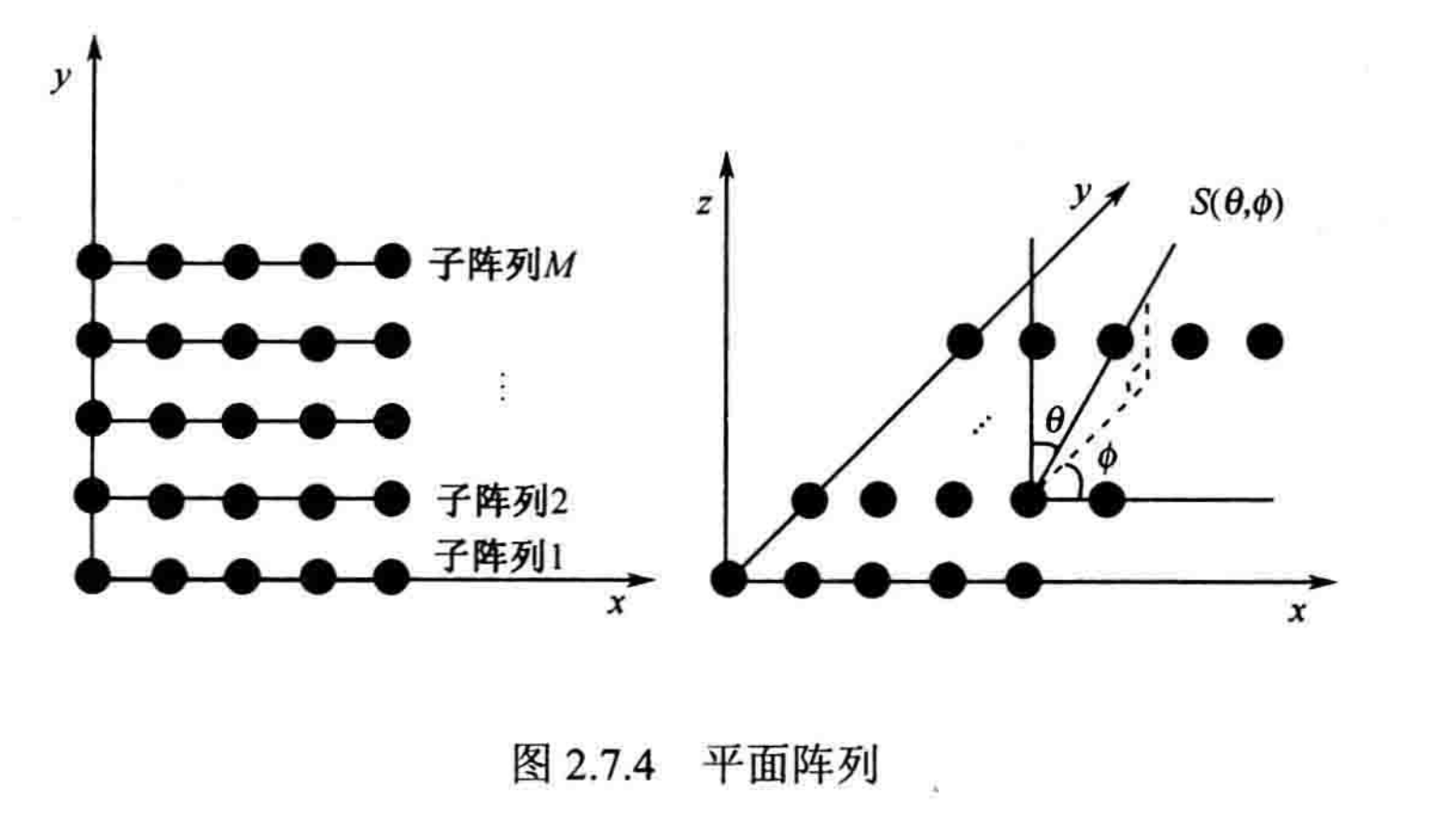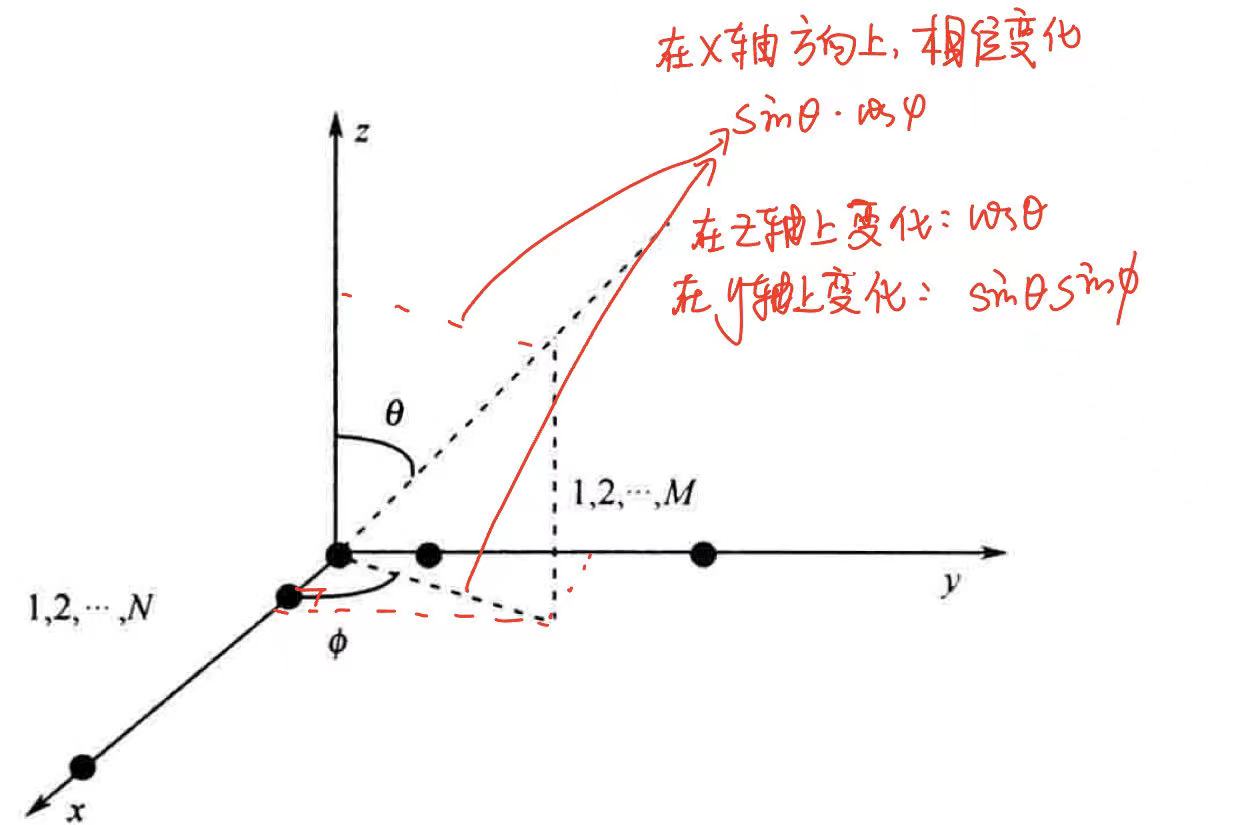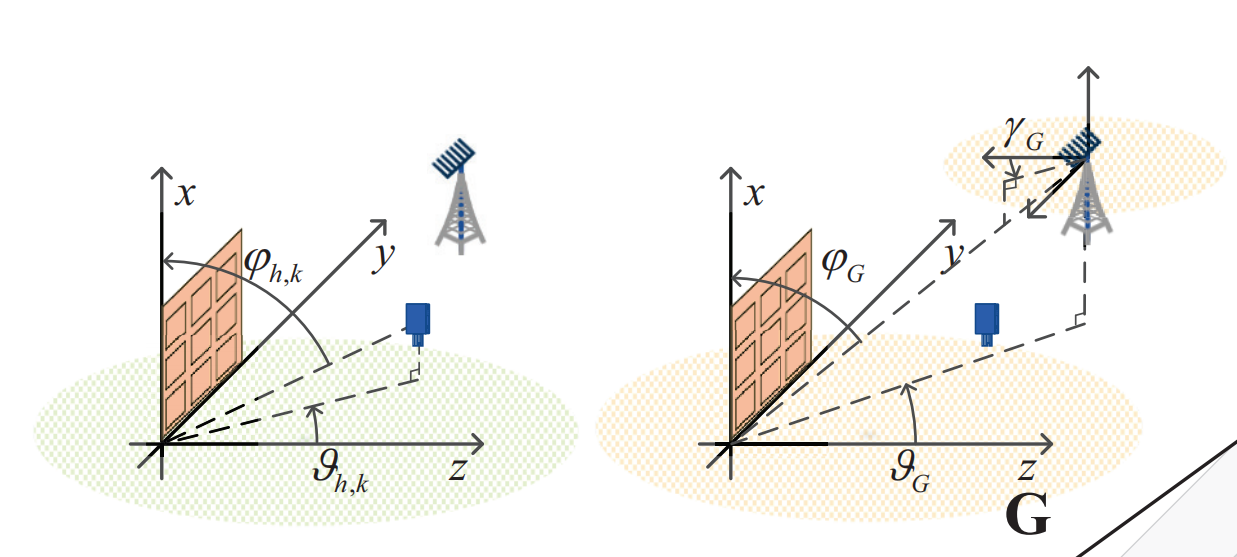Mymathtools
X服从高斯分布,求的均值高阶矩
https://zhuanlan.zhihu.com/p/515334478
对单独一项,乘,由积化和差得:
得求和项为:
同理,为:
matlab实现版本:
https://www.zhihu.com/zvideo/1405113965265899520
IRS计算变型
Robust Beamforming and Phase Shift Design for IRS-Enhanced Multi-User MISO Downlink Communication. Jun Wang et.al. ICC 2020 - 2020 IEEE International Conference on Communications (ICC), June 2020 (pdf) (Citations 17)
记,有:
其中:
验证代码:
clc;clear;close all
%% Initial Parameters
warning('off')
% max_err_all = 0/180*pi;
thre_energy = 5e-5;
loc_IRS = [0, 0, 0];
loc_user = [5*sqrt(2), -5*sqrt(2), 0];
loc_BS = [0, sqrt(2), sqrt(2)];
Ke = 1; % num of user, only one user 2m
M = 4 ; % num of transmitter antennas 10m
N = 100; % num of IRS elements
r1 = sqrt(sum((loc_BS-loc_IRS).^2)); % distance between PB to IRS
r2 = sqrt(sum((loc_user-loc_IRS).^2)); % distance between IRS to User
reference_attenuation = -30; % reference attenuation at 1 m.
kappa_h = 5; % Rician factor of IRS to User channel
kappa_G = 5; % Rician factor of PB to IRS channel
% path_loss_PB2IRS = channel_path_loss(r1, 2.2, reference_attenuation); % path loss of PB to IRS channel
% path_loss_IRS2Ues = channel_path_loss(r2, 2.2, reference_attenuation); % path loss of IRS to User channel
path_loss_PB2IRS = 1;
path_loss_IRS2Ues = 1;
%% channel generation
G_bar = generate_channel_simple(M, N, -pi/2+pi*rand, -pi/2+pi*rand, -pi/2+pi*rand);
G_hat =sqrt(1/2)*(randn(N,M)+1j*randn(N,M));
G = sqrt(kappa_G/(1+kappa_G))*G_bar+ sqrt(1/(1+kappa_G))*G_hat;
G =sqrt(path_loss_PB2IRS)*G;
GG_bar = sqrt(path_loss_PB2IRS)*sqrt(kappa_G/(1+kappa_G))*G_bar;
GG_hat = sqrt(path_loss_PB2IRS)*sqrt(1/(1+kappa_G))*G_hat;;
h_bar = generate_channel_simple(Ke, N, -pi/2+pi*rand, -pi/2+pi*rand, -pi/2+pi*rand);
h_hat = sqrt(1/2)*(randn(N,Ke)+1j*randn(N,Ke));
h = sqrt(kappa_h/(1+kappa_h))*h_bar+sqrt(1/(1+kappa_h))*h_hat;
h = sqrt(path_loss_IRS2Ues)*h;
hh_bar = sqrt(path_loss_IRS2Ues)*sqrt(kappa_h/(1+kappa_h))*h_bar;
hh_hat = sqrt(path_loss_IRS2Ues)*sqrt(1/(1+kappa_h))*h_hat;
w = randn(M, 1)+1j*randn(M, 1);
w = w./norm(w);
% trace(w*w')
Theta = diag(exp(1j*randn(1, N)));
H = diag(hh_bar)'*GG_bar;
d_H = diag(hh_bar)'*GG_hat+diag(hh_hat)'*GG_hat+diag(hh_hat)'*GG_bar; %
v= diag(Theta);
abs(h'*Theta*G*w)^2
abs(v.'*(H+d_H)*w)^2
real(v.'*(H+d_H)*w*w'*(H+d_H)'*conj(v))
Q = kron(conj(w)*w.', conj(v)*v.');
real(myvec(H+d_H)'*Q*myvec(H+d_H))
q = Q*myvec(H);
c = myvec(H)'*Q*myvec(H);
real(myvec(d_H)'*Q*myvec(d_H)+2*real(myvec(d_H)'*q)+c)
real(myvec(d_H)'*Q*myvec(d_H)+2*real(q'*myvec(d_H))+c)还有带SINR的变型,具体可以参见:==,,,==的取值会发生变化。
A Framework of Robust Transmission Design for IRS-Aided MISO Communications With Imperfect Cascaded Channels. Gui Zhou et.al. IEEE Transactions on Signal Processing, 2020 (pdf) (Citations 135)
有:
其中,,,
验证代码:
clc;clear;close all;
loc_IRS = [0, 0, 0];
loc_user = [5*sqrt(2), -5*sqrt(2), 0];
loc_BS = [0, sqrt(2), sqrt(2)];
Ke = 1; % num of user, only one user 2m
M = 4 ; % num of transmitter antennas 10m
N = 36; % num of IRS elements
r1 = sqrt(sum((loc_BS-loc_IRS).^2)); % distance between PB to IRS
r2 = sqrt(sum((loc_user-loc_IRS).^2)); % distance between IRS to User
reference_attenuation = -30; % reference attenuation at 1 m.
kappa_h = 3; % Rician factor of IRS to User channel
kappa_G = 3;
path_loss_PB2IRS = channel_path_loss(r1, 2.2, reference_attenuation); % path loss of PB to IRS channel
path_loss_IRS2Ues = channel_path_loss(r2, 2.2, reference_attenuation); % path loss of IRS to User channel
%% channel generation
G_AOA1 = pi/2;
G_AOA2 = pi/4;
G_AOD = -pi/4;
G_bar = generate_channel_simple(M, N, G_AOA1, G_AOA2, G_AOD);
G_hat = sqrt(1/2)*(randn(N,M)+1j*randn(N,M));
G =sqrt(path_loss_PB2IRS)*(sqrt(kappa_G/(1+kappa_G))*G_bar+sqrt(1/(1+kappa_G))*G_hat);
h_AOA1 = pi/4;
h_AOA2 = pi/2;
h_AOD = -pi/2+pi*rand;
h_bar = generate_channel_simple(Ke, N, h_AOA1, h_AOA2, h_AOD);
h_hat = sqrt(1/2)*(randn(N,Ke)+1j*randn(N,Ke));
h = sqrt(path_loss_IRS2Ues)*(sqrt(kappa_h/(1+kappa_h))*h_bar+sqrt(1/(1+kappa_h))*h_hat);
w0 = 100*exp(1j*randn(M, 1)); % inits
w_best = w0;
Theta0 = diag(exp(1j*randn(N, 1))); % init
Theta_best = Theta0;
T = diag(h)*Theta_best*G;
W = w_best*w_best';
A = ones(1,N)*T*W*T'*ones(N, 1);
II = diag(diag(h)*G*w_best);
XI = diag(Theta_best)*diag(Theta_best)';
B =ones(1,N)*II*XI*II'*ones(N, 1);Bernstein-Type Inequality
A Framework of Robust Transmission Design for IRS-Aided MISO Communications With Imperfect Cascaded Channels. Gui Zhou et.al. IEEE Transactions on Signal Processing, 2020 (pdf) (Citations 135)

General S-Procdure
A Framework of Robust Transmission Design for IRS-Aided MISO Communications With Imperfect Cascaded Channels. Gui Zhou et.al. IEEE Transactions on Signal Processing, 2020 (pdf) (Citations 135)

moment-matching
关键词:矩匹配,PDF,CDF,逆CDF,逆累计分布函数
思想很简单,就是用Gamma分布近似一个复杂分布。由于Gamma分布的参数只与均值和方差有关,这意味着我们只要求出待求随机变量的均值和方差,就可以拟合其PDF。
beta = myapprox_mean/myapprox_var/(path_loss_IRS2Ues*path_loss_PB2IRS); % scaler parameter
alpha = myapprox_mean^2/myapprox_var; % shape parameter
inv_X = gaminv(P_out, alpha, 1/beta)其中gaminv是Gamma分布的逆累计分布函数。alpha是 Gamma分布的shape parameter, beta是Gamma分布的scaler parameter。
AOA/AOD
关键词:LoS,视距信道,面阵,IRS
网上的对IRS面阵的空间向量的建模都是错的,这里我整理一下。
明确俯仰角/方位角
参考《现代数字信号处理及其应用》Page291 和《阵列信号处理及matlab实现》Page 42-43


==明确以L阵的俯仰角和方位角进行建模。==
明确角度后进行分析

所以对于我常用的模型,

有:
天线的近场和远场
详细信息参见:微信公众号
主要结论 ==判断是否远场,是与天线尺寸和工作波长相关的:==
其中为阵元之间的间隔,为波长,为距离。
本文作者: Joffrey-Luo Cheng
本文链接: http://lcjoffrey.top/2022/11/28/mymathtools/
版权声明: 本博客所有文章除特别声明外,均采用 CC BY-SA 4.0 协议 ,转载请注明出处!